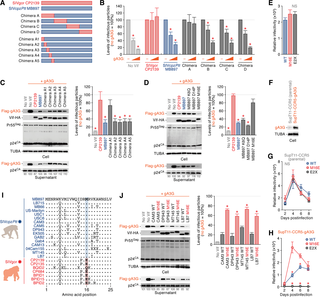Humans continue to be threatened by viral diseases such as Ebola, Zika, and Coronavirus. Such emerging/re-emerging virus outbreaks may be caused by cross-species viruses transmitted from wild animals to humans.
In order to achieve cross-species transmission, the new host must be exposed to the virus in the old host. Next, the virus acquires certain mutations that may be beneficial for replication in the new host. Finally, by continuing to spread in the new host, these viruses can adapt to the environment in the new host. However, at the beginning of this process, the virus must overcome the “species barrier” that prevents the virus from spreading across species. Mammals, including humans, have an “internal immunity” mechanism, which has evolved sufficiently to establish a species barrier for virus transmission.

HIV-1 most likely originated from related precursors in chimpanzees and gorillas
HIV-1 is the causative agent of AIDS, probably originating from related precursors found in chimpanzees (SIVcpz) and gorillas (SIVgor) about 100 years ago. In addition, SIVgor most likely emerged through the cross-species jump of SIVcpz from chimpanzee to gorilla. However, it is not clear how primate lentiviruses successfully spread between different species. In order to limit the spread of lentivirus across species, the “intrinsic immunity” of cells including APOBEC3 protein may inhibit lentivirus replication. On the contrary, the primate lentivirus in this evolutionary “arms race” has acquired its own “weapon”, the viral infection factor (Vif), to counter the antiviral effects of the limiting factor.
Gorilla APOBEC3 protein may limit cross-species transmission of lentivirus
A research team from the Institute of Medical Sciences at the University of Tokyo (IMSUT) showed that APOBEC3G may play a role in inhibiting SIVcpz replication. Interestingly, the research team proved that the amino acid substitution M16E in SIVcpz Vif is sufficient to overcome the limitation mediated by gorilla APOBEC3G.
“As far as we know, this is the first report showing that the great ape APOBEC3 protein may potentially limit the cross-species transmission of great ape lentiviruses, and how lentiviruses can overcome this species barrier. Moreover, this is the first time that the molecular mechanism has been elucidated about the great ape lentivirus can spread across species.” said Kei Sato, associate professor of the Department of System Virology, Department of Infectious Disease Control, IMSUT.
Reference
Yusuke Nakano et al. A role for gorilla APOBEC3G in shaping lentivirus evolution including transmission to humans, PLOS Pathogens (2020). DOI: 10.1371/journal.ppat.1008812